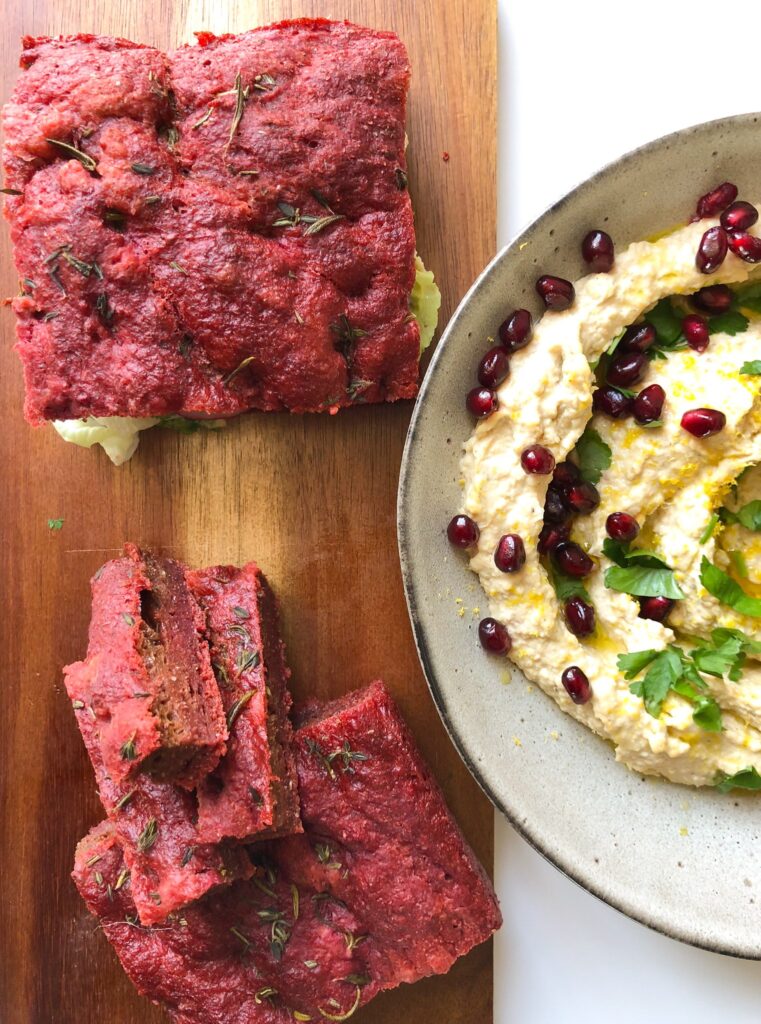Nutrient-Packed Vegan Beetroot Focaccia
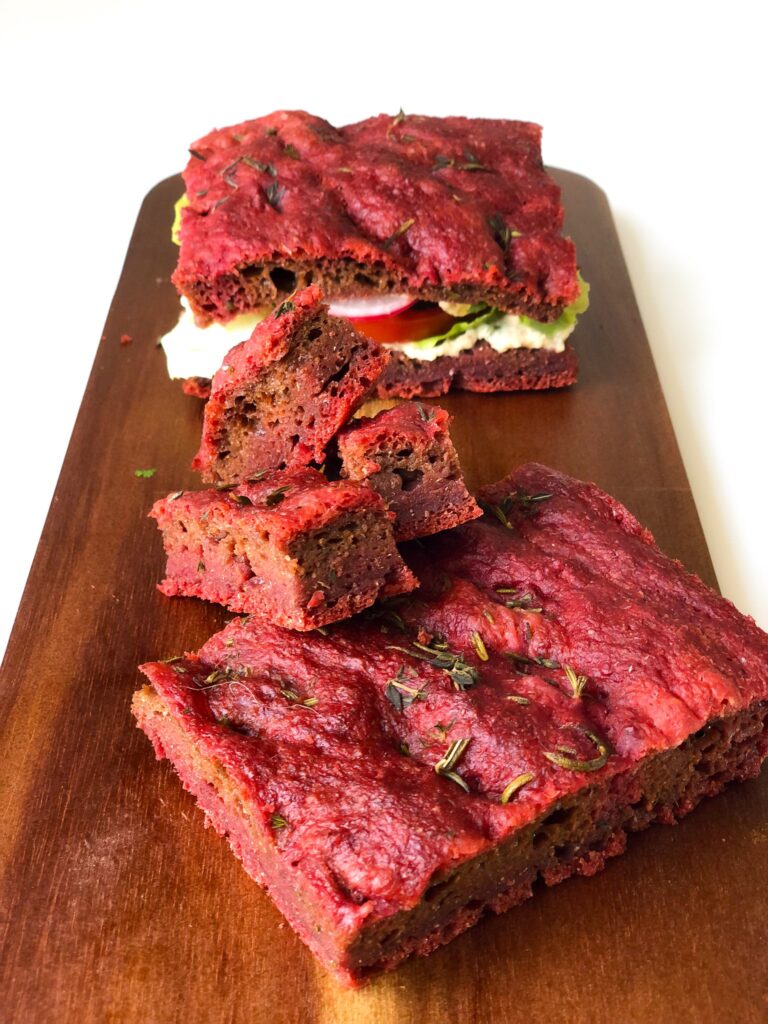
This pinky yet fluffy Focaccia is not just a feast for your eyes and taste buds but also a nourishing treat for your body. The aroma wafts through your kitchen and as you take a bite, it feels like a gentle embrace for your soul. This isn't just bread; it's an affirmation of self-love and care. With each mouthful you're savouring the journey from flour to herbs to beetroot, and nutrient-packed goodness that's like a secret handshake between flavour and health. Because it's not just about feeding our bodies; it's about feeding our souls too.
- Prep 10 mins
- Cook 25 mins
- Prove 4-12h Makes 1 Focaccia

Ingredients
2 medium Beetroots around 200-250gr
250 gr of strong wholemeal Wheat Flour
200 gr of Spelt Flour (see notes below)
50 gr of wholemeal Rye Flour
6 gr of dry Yeast
2 Tbsp of extra Virgin Olive oil
400ml of filtered Water (if using more beetroot reduce the water)
Topping ingredients:
1/2 tsp of flaky sea Salt
1 Tbsp of Rosemary and/or Thyme
Garlic cloves (optional)
Topping ingredients:
1/2 cup of panko Bread crumbs
2 Tbsp of Nutritional Yeast
1 tsp of Smoked Paprika
1 tsp of ground Garlic
freshly crack black Pepper to taste
About this recipe
Let’s be honest, I’ve got a bit of a love affair going on with Bread. There’s something innately comforting about bread, isn’t there? It’s like a time machine to my childhood, back when my grandmother would knead batches of dough in her cosy kitchen. My favourite bread is Sourdough but while I’m starting a new Sourdough starter that will take another week, I decided to use some dry Yeast I have left in my pantry to make this beautifully pinky and nutritious Focaccia.
You can make this Focaccia in 3-4 hours or overnight. They both look good and I have made both versions on different occasions with great success. The overnight version with a slow and longer proving process has a more in-depth flavour.
There’s something oddly therapeutic about the process of making Bread. The rhythm of your hands working the dough, the gradual transformation from sticky mess to smooth perfection – it’s like a meditation. I remember the first time I baked a sourdough loaf. It felt like a science experiment mixed with a dash of intuition. And that triumphant feeling when I sliced into the crusty exterior to reveal an airy interior was pure, flour-dusted satisfaction.
Instructions

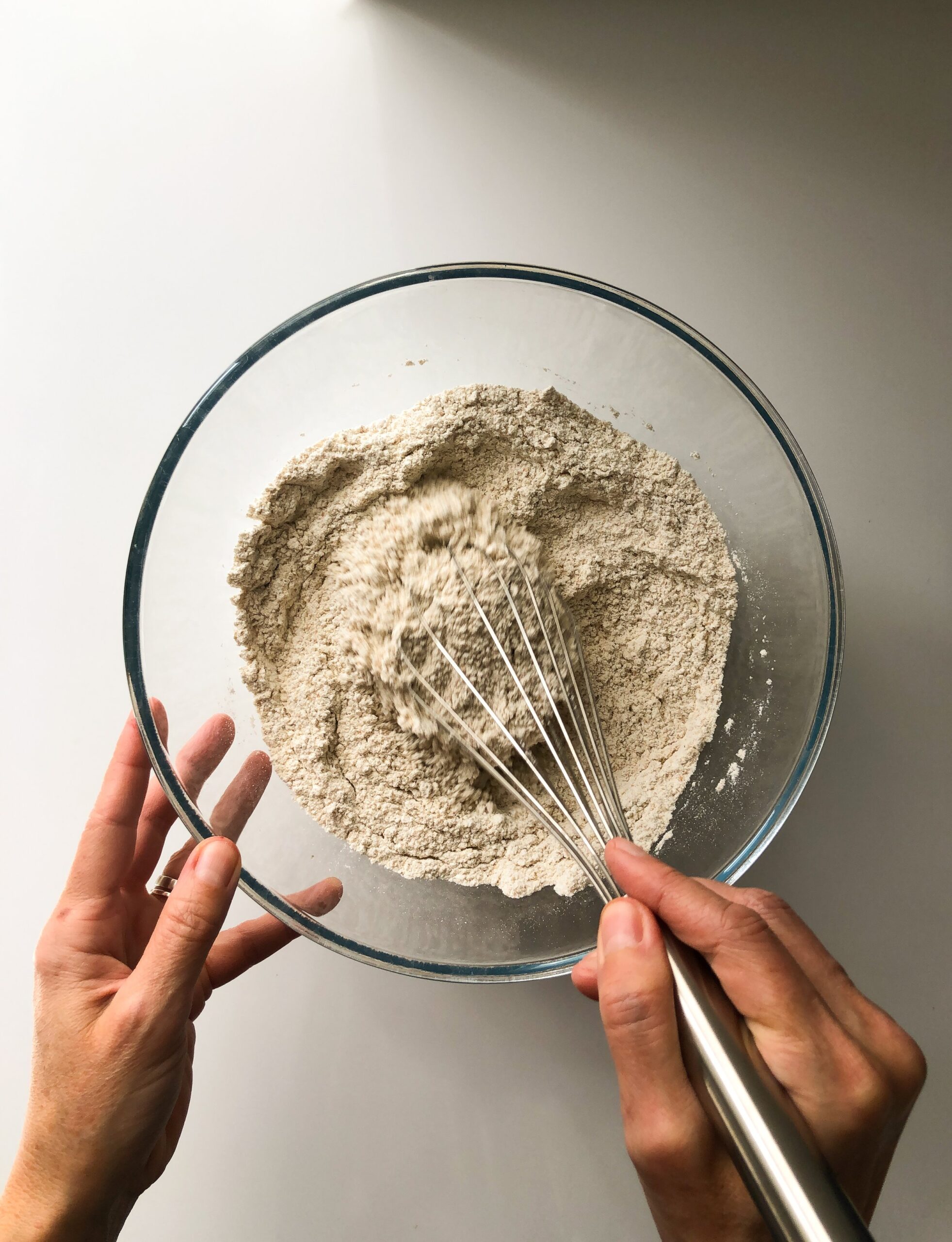
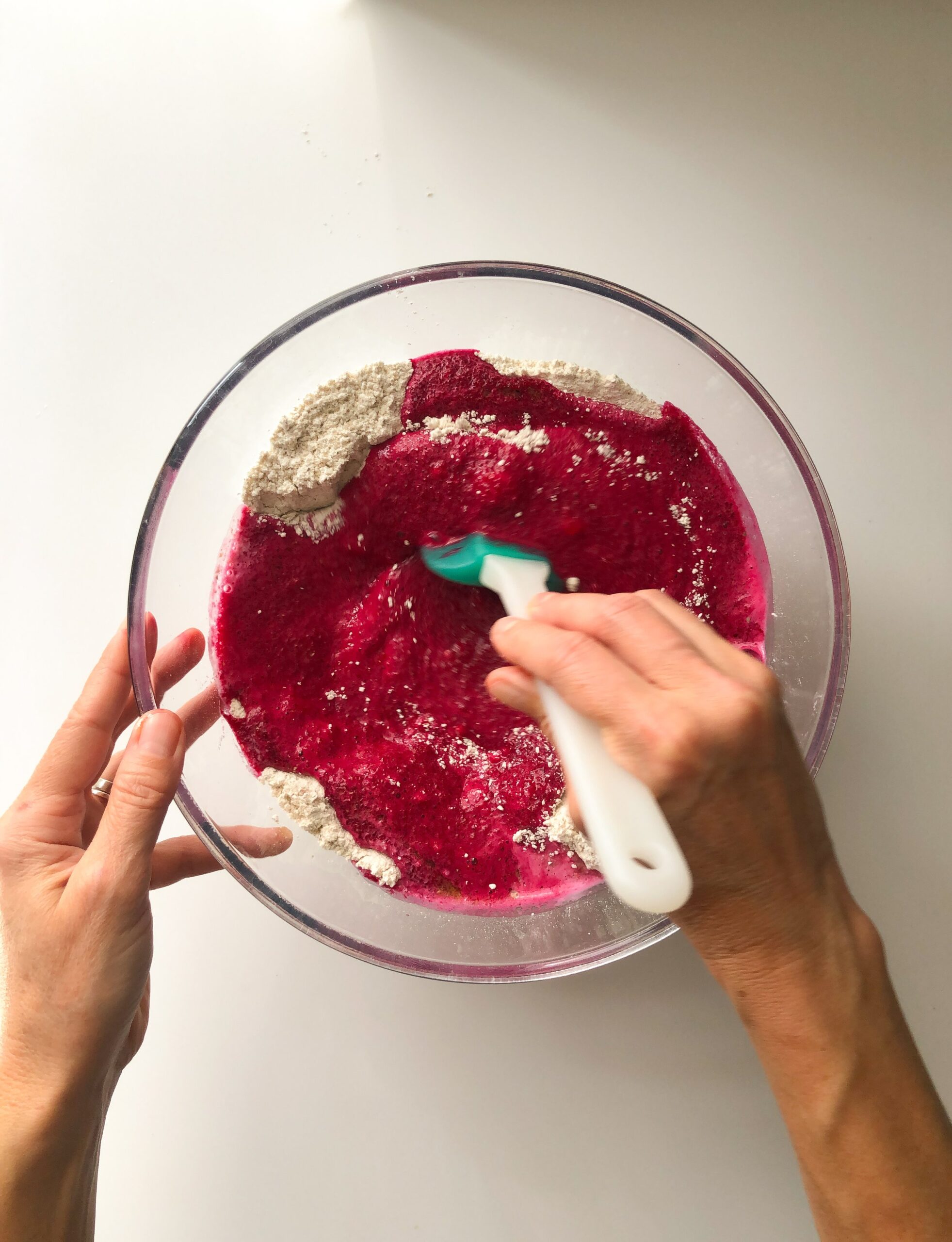

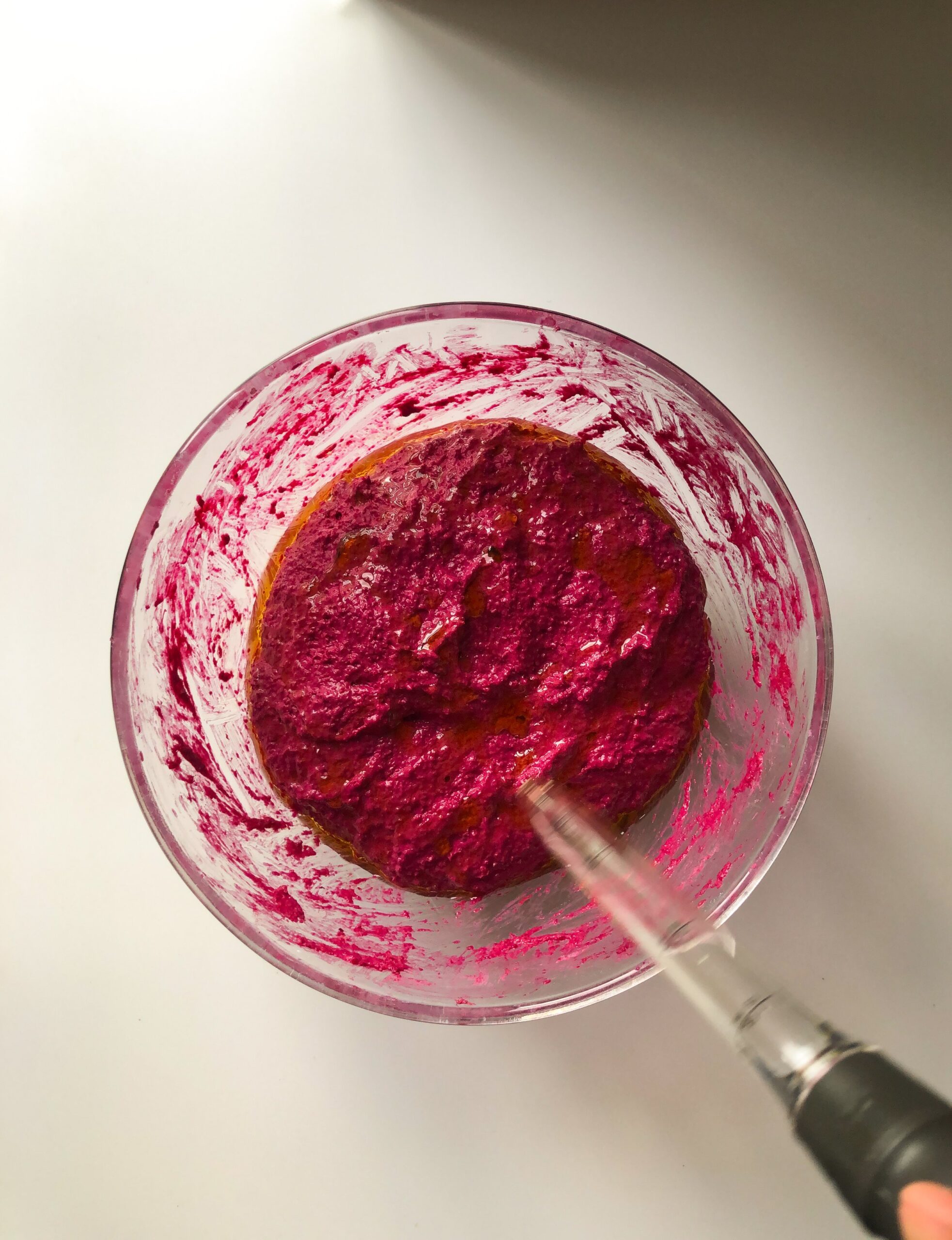
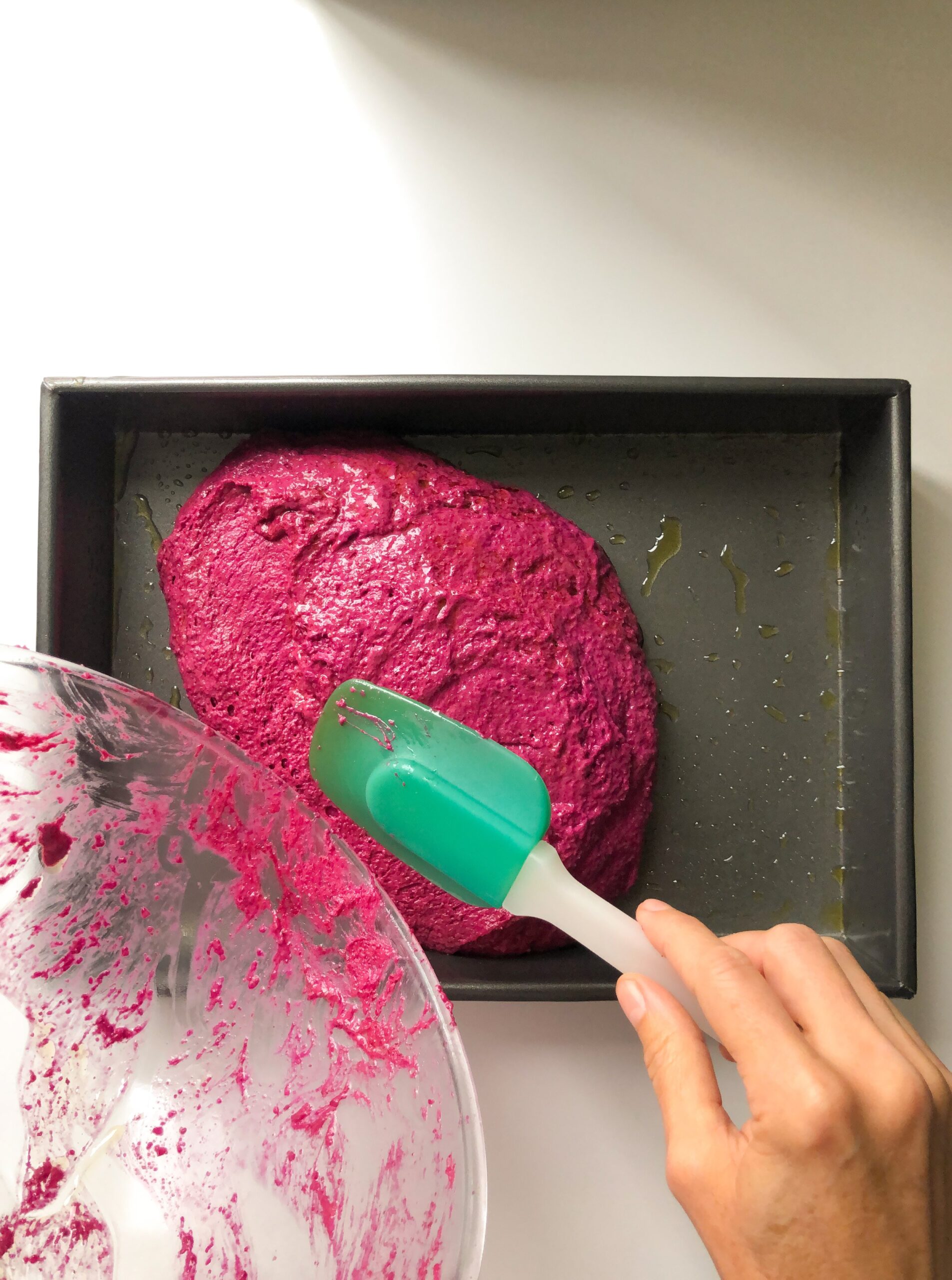


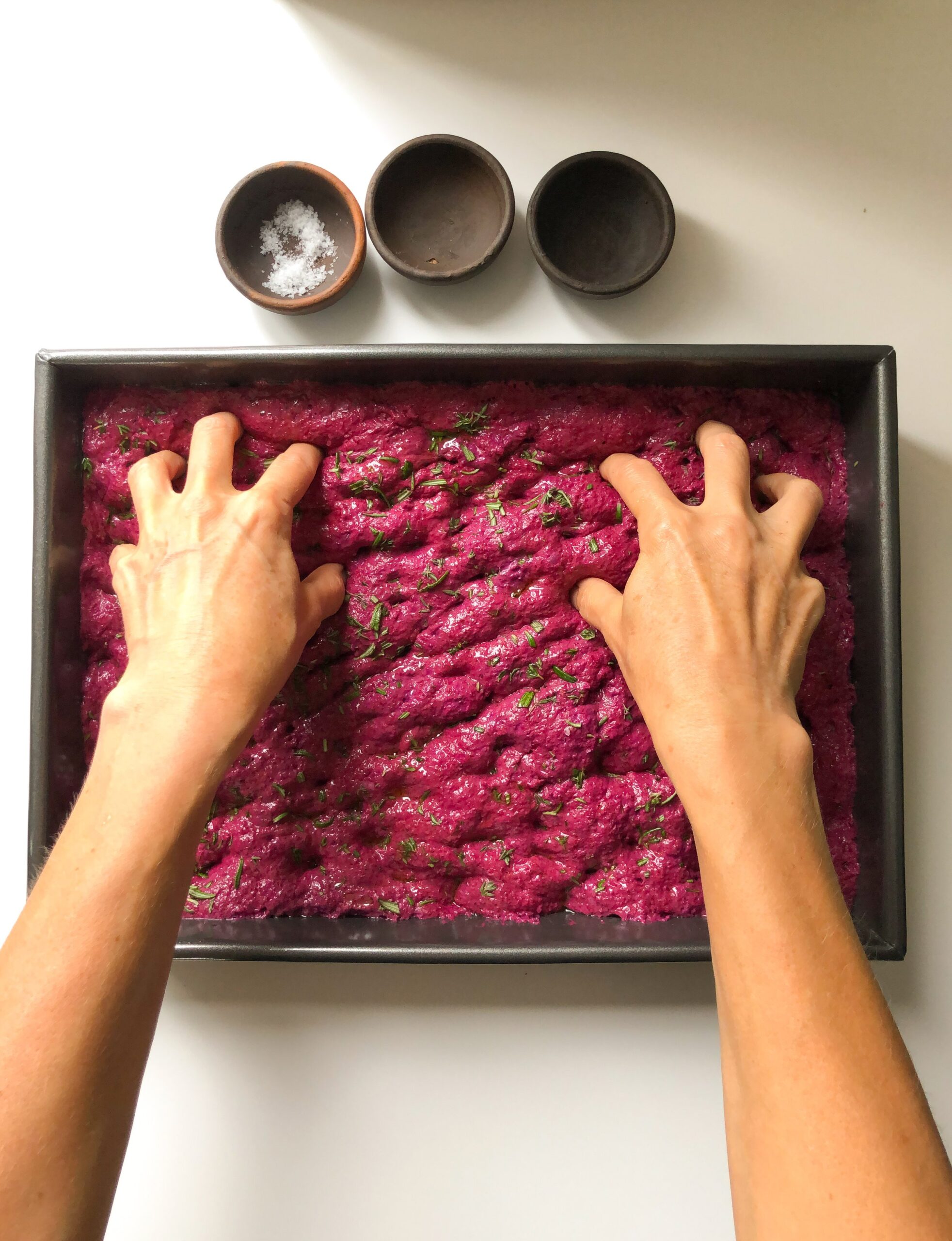
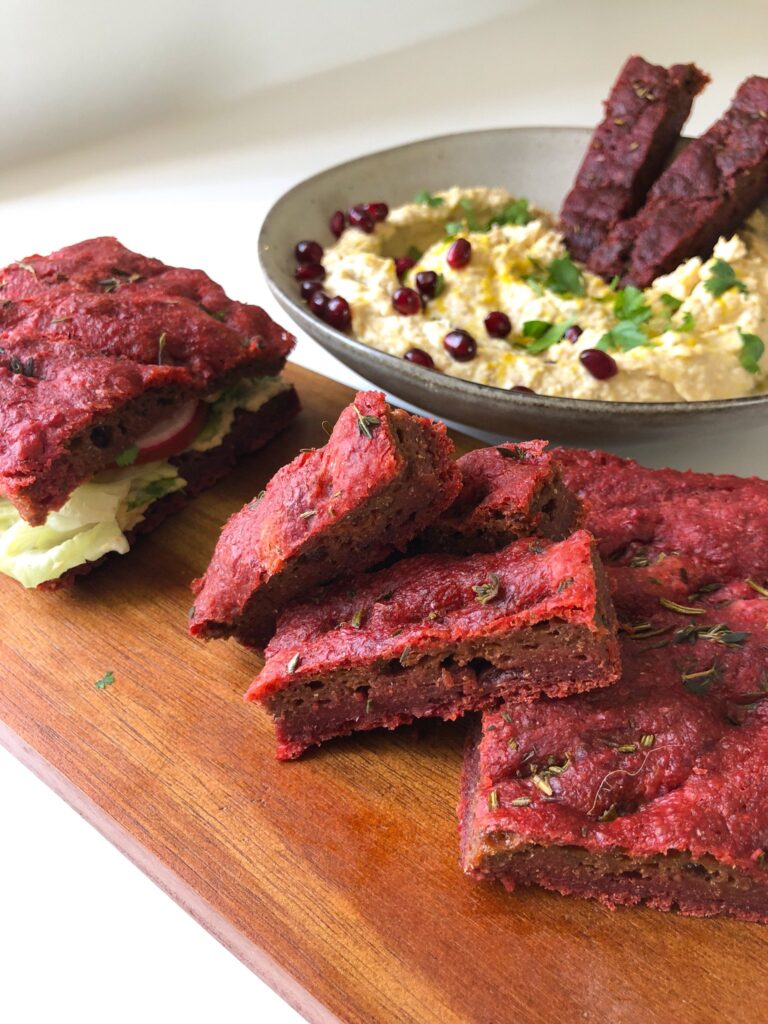
About the Ingredients
Beetroots: At the core of this Focaccia lies the vibrant and earthy Beetroot. Bursting with natural colour and antioxidants, Beetroot brings not only a stunning hue to the Focaccia but also a wealth of health benefits. From promoting healthy blood flow to aiding in detoxification, beetroot is a nutritional gem that adds more than just aesthetics to our dish. The Beetroot amount used in this recipe is tricky because when I use smaller Beetroots I get a lighter and airy result but with bigger Beetroots I get more depth of flavour. Also, when using more beetroot I have to use less water. The colour is also affect by the amount of Beetroot. Less makes a lighter pink Focaccia and more makes it a darker, deep red colour. If is your first time making Bread use less water. Don’t throw away the Beetroot’s leaves – use them for soups or smoothies.
Flours: I’m using a mix of grains: strong Wholewheat, Spelt and Whole Rye. All are organic flours. This choice not only adds depth to the flavour profile but also ensures a steady release of energy, keeping you fuelled and satisfied. The nutrients and fibre from whole grains and Beetroot keep your tummy happy. You can substitute for any flours you would like or even gluten free. I did it with 500gr of Buckwheat flour and it was delicious, though it doesn’t rise as much. The amount to remember is 500gr of Flour so any flour you have in hand up to that total.
6 gr of dry Yeast: This is normally 1 individual sachet. Make sure it’s inside the use by date or if you aren’t sure, mix it with some of the water and wait until it bubbles and creates some foam then you know it’s active and ready to use.
Extra virgin Olive Oil: I avoid cooking with any oil but I do use good quality, cold pressed virgin Olive oil every now and then when necessary and normally raw. This recipe really needs it but I’m using much less than most recipes and I really think 2 Tbsp is enough. I’m using 1/2 Tbsp in the dough, another 1/2 Tbsp to cover before proving. 1/2 Tbsp to grease the tray and the remaining 1/2 Tbsp on the top.
Flaky sea Salt: As you know by now, I use very little or no salt in most of my recipes but in this Focaccia (and Bread in general) I always use a little bit. For this recipe I’m only adding salt on the top for 2 reasons: first because salt in the dough can delay the yeast growing and second when adding it on top I really like to push it inside with my fingers. This creates the contrast of a salty crunchy crust with a soft Beetroot inside. I’m use Maldon sea Salt but you can choose any good quality flaky salt.
Rosemary and or Thyme: Be generous with your herbs. I do add them a bit by eye as I just love the infused taste of Rosemary, Thyme and Beetroot. You can substitute with other herbs of you choice but for me these are a winning combination.
How to use: I can eat this beautiful pink/red Focaccia on is own, especially when it is still slightly warm out of the oven. I have to stop myself from eating it all. I also love to dip it in home-made Hummus or with this incredible cream cheese. This Focaccia is a great show stopper to take to a friend’s house party or BBQ. It is also fantastic to make sandwiches to take to a picnic in the park, the beach or a pack lunch to work.
